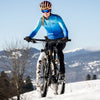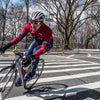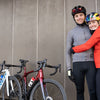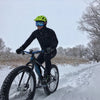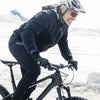Introducing Bicycles to Children: A Fun Guide for Parents
1. Start with Safety & Comfort
Essential Gear (Before They Ride):
- Helmet: Choose a certified, adjustable helmet that fits snugly (no more than 2 fingers between the forehead and helmet brim).
- Padded Shorts/Knee Pads: Optional for beginners, but helpful for falls (especially on paved surfaces).
- Bright Clothing: Use reflective strips or lights if riding in low-light conditions.

Bike Fit (Crucial for Confidence):
- Seat Height: Child’s feet should touch the ground with a slight bend in the knees when sitting on the seat.
- Handlebars: Adjust to a height where the child can reach them comfortably without over-stretching.
- Brakes: Ensure levers are easy to squeeze (adjust cable tension if needed—consult a bike shop for help).
2. Choose the Right Bike for Their Age
| Age | Bike Type | Wheel Size | Tips |
|---|---|---|---|
| 2–4 years | Balance Bike | 12–14 inch | No pedals—teaches balance first (skip training wheels!). |
| 5–7 years | Kids’ Bike | 16–20 inch | Lightweight frame, simple single speed, coaster brakes (foot brakes). |
| 8+ years | Youth/Teen Bike | 24–26 inch | Hand brakes, multi-gears (if ready), adjustable seat/handlebars. |
3. Step-by-Step Learning: From Balance to Pedaling
Stage 1: Master Balance (1–2 Weeks)
-
Balance Bike Drills:
- Let them push the bike with feet on the ground, then lift feet briefly to glide.
- Play “red light, green light” games to practice stopping and starting.
-
No-Pedal Bike Trick:
- Remove pedals from a small bike, so they can use it like a balance bike (great for older kids).
Stage 2: Add Pedals (When They’re Confident)

-
Start on Grass or a Soft Surface:
- Let them sit on the bike, place feet on pedals, and push off gently.
- Use a “running beside” technique: Hold the seat lightly, then release when they gain momentum.
-
Avoid Training Wheels:
- Training wheels can delay balance; kids often rely on them and struggle to transition.
Stage 3: Practice Steering & Braking
-
Weave Through Cones:
- Set up cones or toys to practice turning (make it a game: “avoid the monsters!”).
-
Brake Drills:
- Teach them to use both brakes gently (demonstrate on your own bike first).
4. Make It Fun: Games & Motivation Tips
-
Adventure Quests:
- Plan short rides to a park, ice cream shop, or friend’s house (goal-oriented rides keep them excited).
-
Bike Decorating:
- Let them add stickers, streamers, or a bell to personalize their bike.
-
Family Rides:
- Ride together as a family (use a tag-along bike or trailer for younger kids if needed).
-
Positive Reinforcement:
- Celebrate small wins (“You balanced for 5 seconds! That’s amazing!”) and avoid frustration if they fall.
5. Teach Road Safety (Even for Park Rides)
-
Basic Rules:
- “Look both ways” before crossing paths (even in parks).
- Use hand signals (point left/right to turn, raise hand to stop).
- Stay visible: Wear bright colors and use a bell to alert others.
-
Age-Appropriate Awareness:
- For young kids: Focus on staying on paths and away from roads.
- For older kids: Introduce simple traffic laws (stop at signs, yield to pedestrians).

6. Maintenance for Kids’ Bikes (Keep It Simple)
-
Quick Checks Before Rides:
- Inflate tires (use a small hand pump they can operate).
- Ensure the seat isn’t loose (teach them to twist it—if it moves, tighten the quick release).
-
Involve Them in Cleaning:
- Let them wipe the frame with a damp cloth or help apply chain lube (supervised, of course!).
-
When to Call a Mechanic:
- If the chain falls off often, brakes feel loose, or the bike makes strange noises.
7. Overcoming Common Hurdles
-
Fear of Falling:
- Practice on grass first, and show them how to fall safely (tuck into a roll if possible).
- Wear knee pads for extra confidence.
-
Frustration with Balance:
- Take breaks and switch to fun activities (like scooting or walking) to prevent burnout.
-
Size Transition:
- When upgrading bikes, let them test-ride at a shop to ensure comfort (avoid buying too big “for growth”).

- When upgrading bikes, let them test-ride at a shop to ensure comfort (avoid buying too big “for growth”).
8. Why Bikes Are Great for Kids
- Physical Benefits: Builds strength, coordination, and balance.
- Independence: The thrill of mastering a new skill boosts self-esteem.
- Outdoor Connection: Encourages kids to step away from screens and explore nature.
- Lifelong Skill: Riding a bike is a foundation for future adventures (trail riding, commuting, or sports).
By making learning playful and stress-free, you’ll help kids develop a love for biking that lasts a lifetime. Remember: Patience is key—every child learns at their own pace, so celebrate the journey! 🚴♂️🚴♀️
Categories
Recent Posts
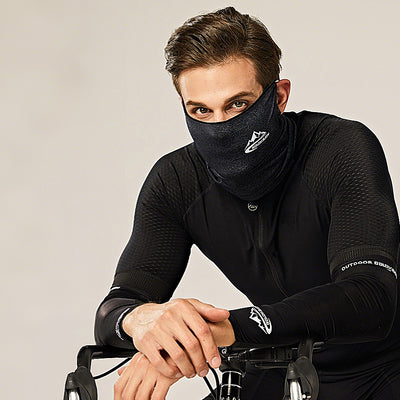
Newsletter Signup
Enter your email to receive daily news and get 20% off coupon for all items.
Popular Products
Magnetic Absorption Half Face Mask
Regular price
$14.50
Winter Cycling Gloves for Men - Thermal Gloves for Skiing Snowboarding Cycling
Regular price
$19.90
Winter Neck Gaiter Face Cover - Thermal Face Mask for Skiing Cycling
Regular price
$13.30

